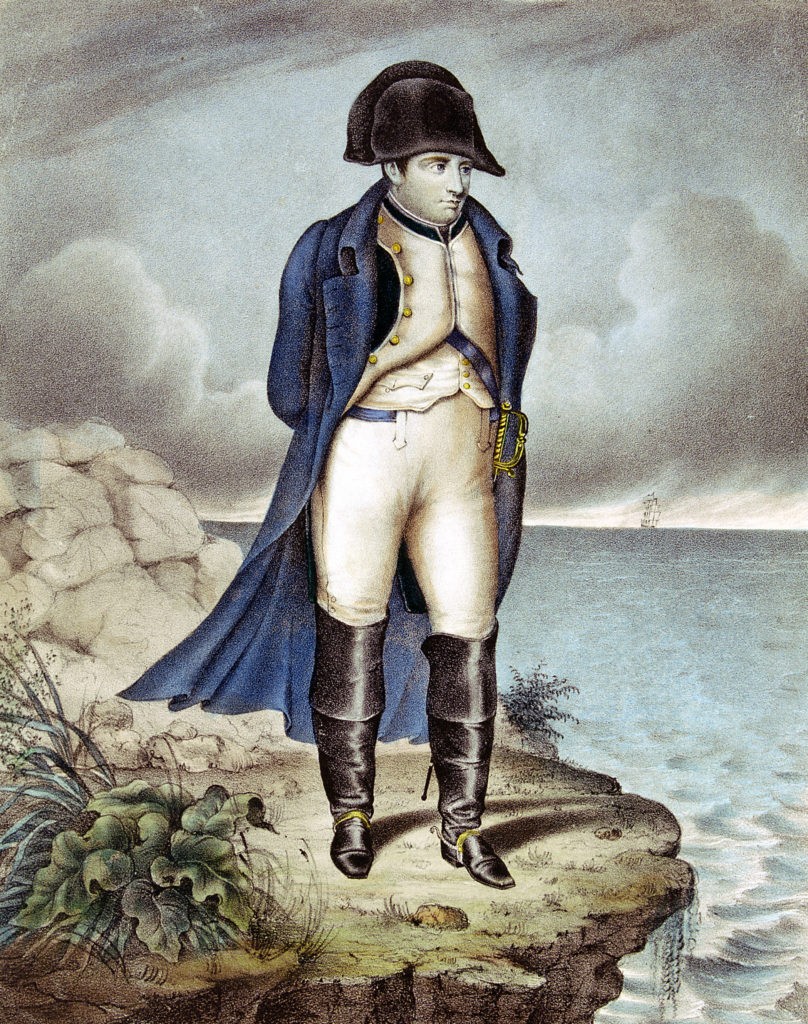The death of Napoleon Bonaparte in 1821 remains one of history’s most intriguing mysteries. Confined to the remote island of Saint Helena after his fall from power, the once-emperor of France succumbed at the age of 51. But the exact cause of his demise has been a subject of intense debate and speculation for centuries, captivating historians, scientists, and armchair detectives alike. Was it stomach cancer, as the initial autopsy suggested, or was there a more sinister explanation at play, such as arsenic poisoning? Let’s delve into the evidence and unravel the theories surrounding how Napoleon truly met his end.
The Initial Diagnosis: Stomach Cancer
When Napoleon passed away on May 5, 1821, his health had been declining for months. He suffered from a range of debilitating symptoms, including severe abdominal pain, increasing weakness, and chronic constipation. In his final weeks, these were compounded by persistent vomiting, relentless hiccups, and signs of blood clots.
The physicians who conducted Napoleon’s autopsy on May 6, 1821, reached a definitive conclusion: stomach cancer. They pointed to gastric ulcers and noted that a large dose of calomel, a mercury-containing medicine, administered shortly before his death, might have exacerbated his condition. For many years, this diagnosis was widely accepted as the definitive answer to how Napoleon died.
The Arsenic Poisoning Theory Emerges
However, the narrative took a dramatic turn in 1961. Swedish dentist Sten Forshufvud, along with scientists Dr. Hamilton Smith and Anders Wassen, published a groundbreaking article in the prestigious journal Nature. Their research, utilizing advanced technology to analyze a lock of Napoleon’s hair believed to have been taken shortly after his death, suggested a startling alternative: arsenic poisoning.
 Napoleon I, Emperor of France, in exile.
Napoleon I, Emperor of France, in exile.
Napoleon Bonaparte in exile on Saint Helena, reflecting the circumstances surrounding his death.
The initial analysis indicated high levels of arsenic in the hair sample. Subsequent studies of other hair samples attributed to Napoleon revealed similar findings, leading Forshufvud and his team to propose that Napoleon had been exposed to arsenic intermittently, possibly for months before his death. This revelation ignited a firestorm of controversy and sparked numerous conspiracy theories.
Evidence for Arsenic Poisoning?
The arsenic poisoning theory gained traction due to the detection of elevated arsenic levels in Napoleon’s hair. Proponents argued that this pointed towards deliberate poisoning, suggesting a clandestine plot to eliminate the exiled emperor. The mystery surrounding his death deepened, fueled by the allure of a potential murder conspiracy.
Doubts and Counterarguments
Despite the sensational nature of the arsenic theory, it faced significant challenges and counterarguments. Scientists J. Thomas Hindmarch and John Savory, writing in Clinical Chemistry, offered a strong rebuttal. They highlighted the widespread use of arsenic in the 19th century for various purposes. Arsenic was a common ingredient in medications like Fowler’s solution, used as a tonic, and was also found in rodenticides, insecticides, clothing dyes, and even candy wrappers.
Furthermore, arsenic was present in everyday items and environments. French aristocrats, including Napoleon, used arsenic-based face and hair powder. Arsenic could also be found in water supplies, wallpaper, coal smoke, and even the soil where Napoleon was initially buried on St. Helena. The practice of preserving hair locks in arsenical solutions further complicated the interpretation of hair sample analysis.
Re-examining the Evidence and Historical Context
Considering the historical context, the presence of arsenic in Napoleon’s hair may not be conclusive evidence of poisoning. Exposure to arsenic was commonplace in the 19th century, making it difficult to distinguish between environmental exposure and intentional administration.
Moreover, the symptoms Napoleon exhibited align more closely with stomach cancer than arsenic poisoning. While arsenic poisoning can cause abdominal pain and vomiting, it typically presents with a different symptom profile than the prolonged and debilitating illness Napoleon endured.
Conspiracy Theories and the Marquis de Montholon
The arsenic poisoning theory inevitably led to conspiracy narratives. One popular theory implicated Charles Tristan, marquis de Montholon, Napoleon’s companion in exile. The motive? Napoleon bequeathed Montholon a substantial sum of 2 million francs in his will. However, this remains largely speculative and lacks concrete evidence. While intriguing, such theories often overshadow the more plausible medical explanations.
The Most Likely Cause: Stomach Cancer Revisited
Despite the allure of mystery and conspiracy, the original autopsy diagnosis of stomach cancer remains the most scientifically and historically sound explanation for Napoleon’s death. Napoleon’s family had a known history of gastric carcinomas, increasing his predisposition to the disease. His reported symptoms, the autopsy findings, and the medical knowledge of the time all converge to support stomach cancer as the primary cause of his demise.
While the arsenic theory and associated conspiracies continue to fascinate, they are largely based on circumstantial evidence and fail to account for the broader historical and medical context. It is crucial to consider the prevalence of arsenic in the 19th century and the strong evidence supporting a natural cause of death, consistent with Napoleon’s symptoms and family history.
Conclusion: Letting the Emperor Rest
Ultimately, definitively answering “How Did Napoleon Die?” with absolute certainty remains challenging. The arsenic debate highlights the complexities of historical interpretation and forensic science. However, considering the totality of evidence, including Napoleon’s symptoms, family history, and the medical practices of the era, stomach cancer emerges as the most probable cause of his death. While the mysteries surrounding Napoleon’s life and death will likely continue to intrigue, perhaps it is time to acknowledge the most likely explanation and allow the emperor to rest in peace within his magnificent tomb in Paris.
